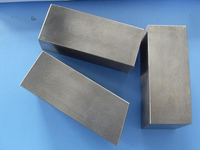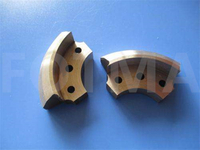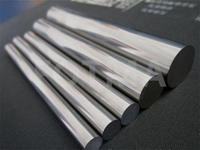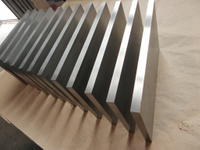Views: 15 Author: Site Editor Publish Time: 2021-01-26 Origin: Site
In 1792, the Swedish chemist Elm used a mixture of charcoal and molybdic acid blended with linseed oil and burned in a sealed manner to obtain molybdenum. Because metallic molybdenum has the advantages of high strength, high melting point, corrosion resistance, and wear resistance, it has been widely used in industry.
Introduction to molybdenum ore: In the metallurgical industry, molybdenum is used as an additive in the production of various alloy steels, or combined with tungsten, nickel, cobalt, zirconium, titanium, vanadium, rhenium, etc. to form advanced alloys to improve its high-temperature strength, wear resistance and resistance Decayed. Molybdenum alloy steel is used to manufacture transportation devices, locomotives, industrial machinery, and various instruments. Certain stainless steels containing 4%-5% molybdenum are used in the production of precision chemical instruments and equipment used in seawater environments. High-speed steel containing 4%-9.5% can be used to manufacture high-speed cutting tools. Molybdenum, nickel, and chromium alloys are used to manufacture metal components of aircraft, corrosion-resistant parts on locomotives and automobiles. Molybdenum, tungsten, chromium, and vanadium alloys are used to make alloy components and parts for warships, tanks, guns, rockets, and satellites. Molybdenum is widely used as heating materials and structural materials for high-temperature electric furnaces, large electrodes and grids of vacuum tubes, semiconductors and electric light source materials. Because of its small thermal neutron capture cross-section and high durability, molybdenum can also be used as a structural material for nuclear reactors.
In the chemical industry, molybdenum is mainly used for lubricants, catalysts and pigments. Due to its lamellar crystal structure and surface chemical properties, molybdenum disulfide has good lubricating properties under high temperature and pressure, and is widely used as an additive for oils and greases. Molybdenum is a catalyst component in the desulfurization of hydrogen production and other petroleum refining processes. It is used in the oxidation-reduction reaction of ethanol, formaldehyde and oil-based chemicals. Molybdenum orange is an important pigment. Molybdenum chemicals are widely used in dyes, inks, color precipitation dyes, and anticorrosive primers. Molybdenum compounds are also widely used in agricultural fertilizers.
Characteristics of molybdenum ore raw materials:
The element abundance of molybdenum in the crust is about 1×10-6, and among magmatic rocks, granites contain the highest molybdenum content, reaching 2×10-6. Molybdenum belongs to the transitional iron-philic element in the geochemical classification. In internal mineralization, molybdenum is mainly combined with sulfur to form molybdenite. Molybdenite (MoS2) is the most widely distributed molybdenum mineral with practical industrial value among more than 30 molybdenum-containing minerals known in nature. Other more common molybdenum-containing minerals include iron molybdenum ([Fe3+(MoO4)8·8H2O]), calcium molybdate (CaMoO4), color molybdenum lead (PbMoO4), colloidal sulfide molybdenum (MoS2), blue molybdenum Mine (Mo3O8·nH2O) and so on.
There are multiple types of molybdenite. Experiments show that the appearance of multiple types is related to the formation temperature. The formation temperature of 2H-type molybdenite is higher than that of 3R-type molybdenite. From low to high temperature, amorphous MoS2→colloid MoS2→3MoS2→2HMoS2 is formed. The temperature measurement data shows that the formation temperature of molybdenite has a wide range, from quite high temperature to relatively low temperature, and a large amount of formation occurs in the high to medium temperature stage. Under the action of hydrothermal fluid, MoS2 precipitates under acidic conditions, that is, molybdenite is the most stable under acidic conditions. When the solution turns to neutral, molybdenum becomes soluble thiomolybdate and molybdate and reactivates . Under low and normal temperature conditions, Mo4+ produces collosulfurite (MoS2) in a strongly acidic reducing environment, and the product after its oxidation is blue molybdenum (Mo3O8·nH2O). In exogenous effects, molybdenum is Mo6+, which has strong mobility. Similar to uranium, it is stable in the transitional environment of oxidation and reduction that is close to neutral or alkalescent, thereby generating a variety of uranium-containing molybdate minerals, such as molybdenum ore [(UO2)MoO4·4H2O], molybdenum Uranite [Ca(UO2)3(MoO4)·(OH)2·11H2O] etc. Iron molybdenum flower [Fe2(MoO4)3·nH2O] is a common mineral formed by sulfide ore under acidic conditions (pH=3~5). Color molybdenum lead ore is the product of lead-zinc ore containing molybdenum under neutral conditions. Rhenium and molybdenum have similar ionic radii, so they often replace molybdenum and are enriched in molybdenite, becoming the main source of industrial rhenium. The rhenium content in molybdenite is often related to the 3R content in molybdenite and the rhenium content in the ore-forming solution.





